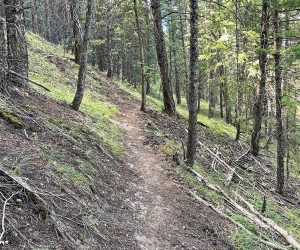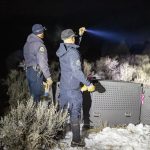Vail fire chief: ’Not if, but when’ town sees significant wildfire
Mark Novak calls for building code changes, additional funding for the department’s wildland operations

Vail Fire Chief Mark Novak has for years said it’s not a matter of “if, but when” the town will experience a major wildfire. Now, “when” may be sooner than anyone thinks.
During a Tuesday presentation to the Vail Town Council, Novak, the town’s fire chief since late 2014, said a changing climate has him worried.
“I’ve never before felt this sense of urgency,” Novak said. “I’m confident we’ll see something impactful in the next decade.”
What’s driving that sense of urgency is a combination of environmental factors that includes shorter winters, more variable precipitation and more days when forests are more likely to burn. That trend has been developing for several years.
This year, Paul Cada, Vail’s wildland fire coordinator, noted the area had “near average” snowfall, but snowpack peaked a month earlier than normal.

Support Local Journalism
Cada told council members he’s often asked whether the drought of 2020 was an anomaly or an indicator of a new climatic normal.
“The evidence points to a new normal,” Cada said.
There’s a lot of drought
This year, Colorado’s current drought map shows the entire Western Slope in some level of drought. Most of Eagle County is showing either “extreme” or “exceptional” drought conditions. That includes both high peaks and high desert areas.
Vail’s fire department for the past several years has been working to make Vail a more “fire adapted community.” A significant part of that effort came in late 2019, when the Vail Town Council approved an ordinance making changes to some of the town’s building codes.
Those changes detail what kinds of building and landscaping materials can be used in new construction, renovations and additions of more than 500 square feet.
Novak said implementing the new regulations has been “reasonably smooth.” But, he added, the rules currently in place will take many years to have an effect across town.
Novak asked council members to consider expanding the rules to apply to re-skinning buildings, and require a 5-foot buffer around homes.
The buffer is the most important part of the strategy, Novak said.
While fire crews do their best, “Homes need to survive without the assistance of a firefighter,” he said.
Novak added that the buffer doesn’t have to be elaborate, and he isn’t asking people to replace existing decks and other structures. The buffers can be created by not using bark mulch, not stacking firewood next to a home and other simple moves.
Council member Kim Langmaid asked if the town could find a way to “incentivize” homeowners to replace aging wooden shake-shingle roofs. Those roofs can be bad news in fire-prone areas, easy to ignite with flying embers and likely to spread embers of their own in case of a fire.
“There’s nothing more hazardous to a community than shake-shingle roofs,” Novak said.
Cada said other communities have provided financial incentives to speed up replacement of aging roofs.
Effective education
Cada added that education efforts have had positive effects — Cada said signups have increased for Eagle County alerts and other early warning and property evaluation resources.
If a fire does strike the Vail area, Cada said the town’s evacuation process depends on having a prepared community.
In addition to education, Novak flatly asked the council for more resources.
In the department, Cada said sending firefighters to fires around the region has led to higher levels of qualification, and the wildland crews are building depth and experience to conduct prescribed burns around town.
But, Novak said, the department needs to increase staffing, as well as have the funds available to hire contractors for other work.
Council member Travis Coggin said providing more funding is something he could probably support, with more information.
Other council members also said they would probably support more funding for wildfire prevention and firefighting.
At the end of the presentation, Mayor Dave Chapin thanks Novak and Cada for the “great, sometimes scary” information.
“This is real,” Chapin added. “We need to do everything we can.”
The top three fires in Colorado history burned in 2020. They are:
Cameron Peak: 208,903 acres (326 square miles), $36 million in suppression costs and property damage.
East Troublesome: 192, 560 acres (301 square miles), $218 million in suppression costs and property damage.
Pine Gulch: 139,000 acres (217 square miles), $35 million in suppression costs and property damage.











